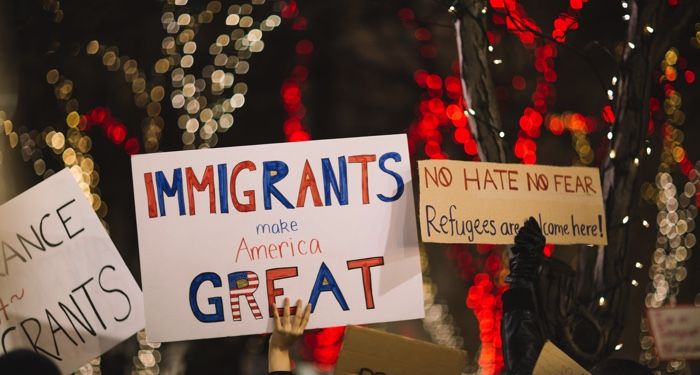
How Contemporary American Fiction Capture the Woes Of Immigration
Contemporary American fiction sheds light on the many perils of being an immigrant in the promised land. It depicts how this country slides downwards every day into new models of barbarity. Parents are separated from their babies, an arbitrary piece of paper can reduce someone’s entire personhood to the status of an “undocumented alien,” and mass shootings are a common occurrence. Thousands of us flee our homelands to settle in America, but is it truly the ticket to a better future?
In Yara Zgheib’s No Land To Light On, we are introduced to a young Syrian couple, Sama and Hadi. Hadi was traveling to Jordan to make arrangements for his father’s funeral. On the day of his return, January 28, 2017, when Sama came to the airport to receive him, she was met with enormous protests breaking out regarding Donald Trump’s order banning entry from seven Muslim-majority nations. As was expected, Hadi was denied entry back into the United States, thus forcefully separating him from his family. Migration is the natural way of being. Food and shelter are the chief reasons why people dream of immigrating to a first-world country. And yet, we build arbitrary borders and put people’s survival at stake.
In chapters weaving both the past and the present, Zgheib recounts the couple’s desperate attempts at survival and figuring out a way to be together again. Hadi’s refugee travel document, I-131 application, marriage certificate, work contract, and other official documents were suddenly considered invalid in America. He had to sit for an exhausting interview with an officer who accused him of being a terrorist. He was manhandled, dehumanized, and forced to sign paperwork that voluntarily suspended his refugee status and put him on the next flight back to Syria. News of Hadi’s deportation was too much for Sama to bear, and she went into premature labor. While Hadi fought for his right to live, Sama saw their newborn fight for his life.
Zgheib has laid bare the refugee crisis and the effects of the travel ban against the backdrop of a love story. She illustrates how even though the American sociopolitical landscape is capable of killing people of color migrating from different countries, it can never scare them into acquiescence. Zgheib zooms in on young love. Sama and Hadi’s grief was unbearable and they couldn’t find another way to live with it instead of having to bear it in their hearts. In the end, we see that it wasn’t those who could inflict the most pain, but those who suffered the most that emerged victoriously.
Patricia Engel’s novel Infinite Country follows a mixed-status immigrant family as their lives get upended by borders and cruel immigration policies crafted by lawmakers whose lives are far removed from the ethos of the hoi polloi. The opening chapter traces the story arc of 15-year-old Talia, born to Colombian immigrants in America but raised in her parents’ homeland, as she escapes her reform school in the highlands of Colombia. Engel has introduced the themes of criminality and morality in the first chapter itself, which will keep reverberating throughout the novel. The readers will be left to meditate on concepts like who gets to assign the status of a “criminal” and on whom, is there any universal module of criminality, how much of it hinges on our subjective moral compasses and vested interests, what unleashes the extraordinary evil in ordinary humans, and the like.
The state primarily targets men as attributing to a sexist rationale they are conventionally considered the principal financial providers. To quote Nathan Rutstein, “Prejudice is the emotional commitment to ignorance.” Removing fathers from the equation disrupts the heteronormative conjugal model altogether. As Talia’s mother, Elena, was left with the arduous task of fending for her children all by herself, the readers witness her wonder if she would have mothered more children provided Mauro, her husband, had been allowed to stay back in America.
Draconian immigration measures stem from an irrational fear of the immigrant demographic posing a cultural threat through biological reproduction. Mauro, a recovering alcoholic, was often seen contemplating his life’s choices and thinking of himself as a failure for reasons beyond his control. Engel’s book is also a social critique of both the material and emotional toll detention and deportation have on its victims. She refers to the psychological terror of impending police raids that immigrant families have to live with. Mauro and Elena kept shifting houses. They were hypervigilant to the point of being paranoid about how they acted so as not to raise any eyebrows and therefore be the victims of the wrath of a country that harbors an unreasonable animus towards people of color.
The need to secure a better life is an impulse for human beings, but what promises does America hold that guarantees safety and prosperity for all its migrants? Contemporary American immigrant fiction makes us realize that the Sturm und Drang of both political and personal tragedy is the overarching human condition and is not just confined to the boundaries of Colombia or Syria. How did we humans learn to live without the happily but ever after?













